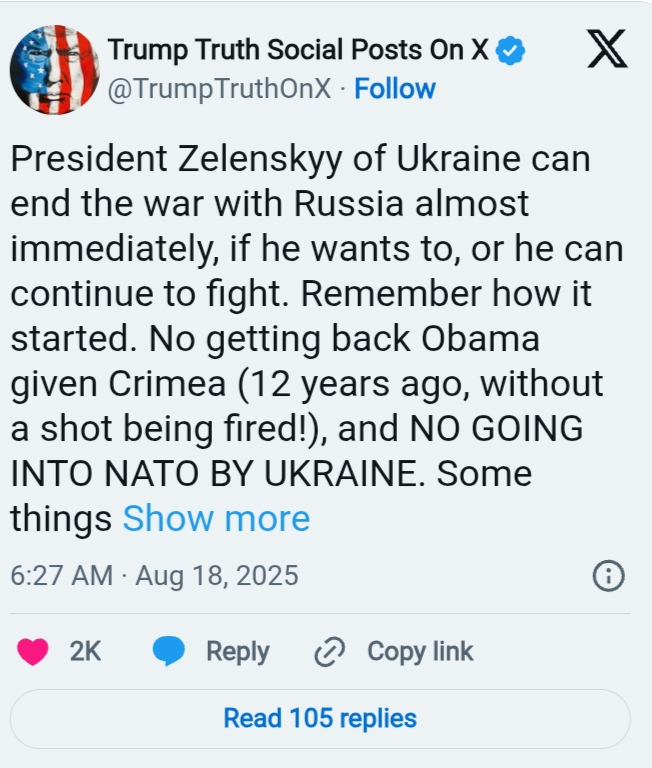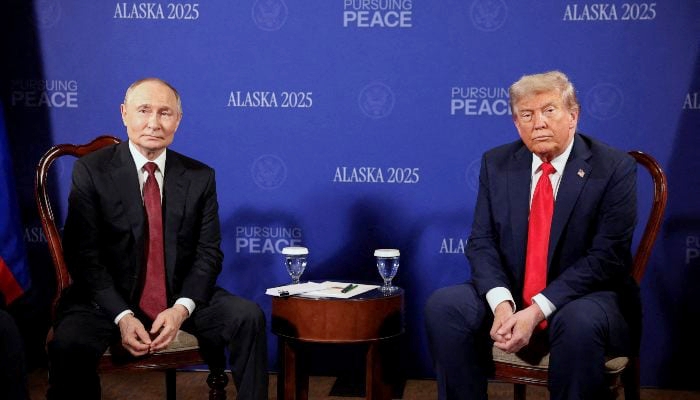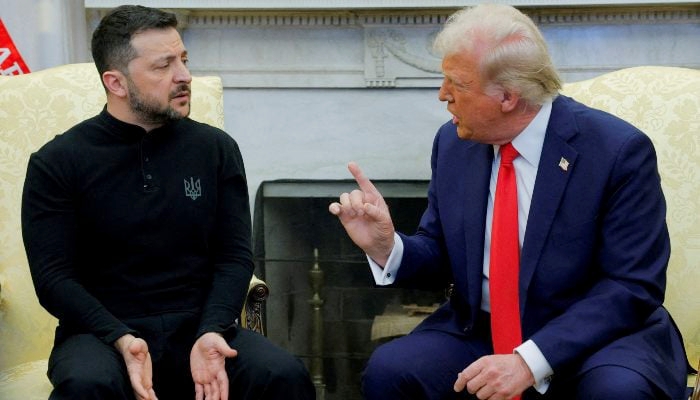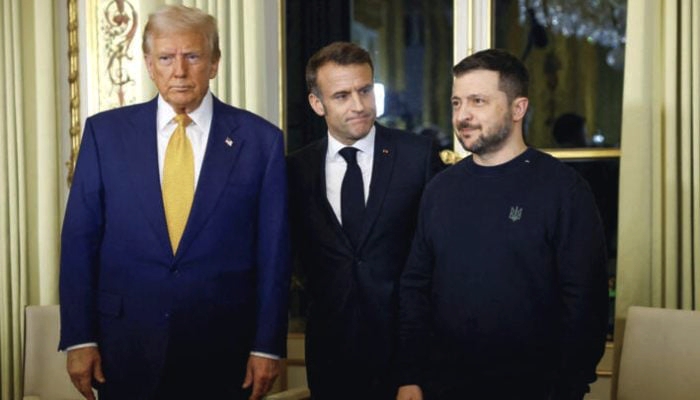Washington: Ukrainian President Volodymyr Zelensky has arrived in the United States for crucial peace discussions, joined by senior European leaders, at a time when Washington’s stance on the conflict appears to be shifting.
The visit follows a high-profile summit between U.S. President Donald Trump and Russian President Vladimir Putin in Alaska last week. While the meeting did not produce a ceasefire, it raised new questions about the direction of negotiations, particularly after Trump emphasized that Ukraine’s NATO membership and the return of Crimea were “off the table.”
Trump’s Position
https://x.com/TrumpTruthOnX/status/19572530
On his social media platform, Trump claimed that Zelensky could “end the war with Russia almost immediately” if he was willing to compromise. He argued that Crimea, annexed by Russia in 2014, was lost long ago and that Ukraine’s NATO aspirations would not be realized.
“Some things never change,” Trump wrote, suggesting that Kyiv’s insistence on these points was preventing progress.
European Concerns
Zelensky’s Washington trip includes meetings with Trump, European Commission President Ursula von der Leyen, NATO chief Mark Rutte, and the leaders of Britain, France, Germany, Italy, and Finland. It marks his first U.S. visit since a tense exchange earlier this year, when Trump and Vice President JD Vance accused the Ukrainian leader of being “ungrateful.”
European capitals remain wary of Washington’s approach, fearing Ukraine could be pressured into conceding land. French President Emmanuel Macron warned that only Russia was pushing for a peace settlement that amounted to “capitulation.” Poland’s foreign minister similarly stressed that “pressure must be applied to the aggressor, not the victim.”
Security Guarantees

Despite concerns, Zelensky welcomed Washington’s offer of “historic” security guarantees, which Trump said could resemble NATO’s collective defense clause but would remain outside the alliance framework. Such assurances, if formalized, could provide Ukraine with long-term protection while bypassing the contentious issue of NATO membership.
Land Concessions on

Reports suggest Moscow signaled flexibility on some fronts but maintained its demand for Ukrainian withdrawals from Donetsk, Luhansk, Kherson, and Zaporizhzhia—regions it annexed despite lacking full control. Sources familiar with Trump’s discussions indicated he might support allowing Russia to retain territory in Donbas in exchange for freezing the front lines in Kherson and Zaporizhzhia.
Trump’s envoy, Steve Witkoff, confirmed that talks regarding Donetsk would be central to Monday’s negotiations, though he withheld specifics.
Zelensky’s Stance
While Zelensky has consistently rejected surrendering Ukrainian territory, he acknowledged readiness to discuss difficult issues within a trilateral summit involving both Trump and Putin. Moscow, however, has downplayed the likelihood of such a meeting.
Meanwhile, Russian forces continue to advance, particularly in Donetsk, and fresh strikes on Kharkiv and Sumy in recent days have left multiple casualties.
Outlook

The Washington meetings may prove decisive in shaping Ukraine’s future path. For Kyiv, the central question is whether security guarantees can substitute for NATO membership—and whether peace can be secured without conceding sovereign land. For Europe, the concern remains that a deal struck under pressure could entrench Russian gains rather than end aggression.



